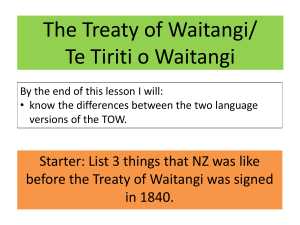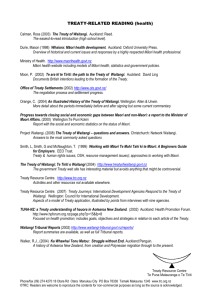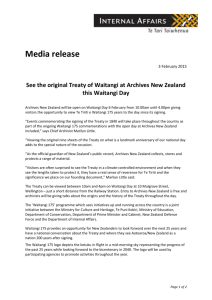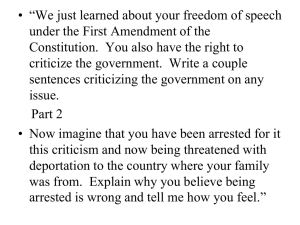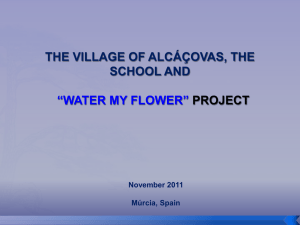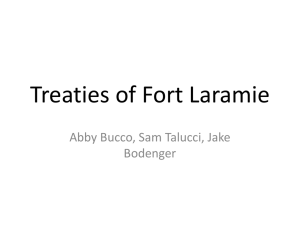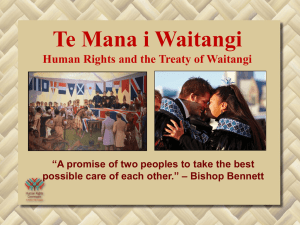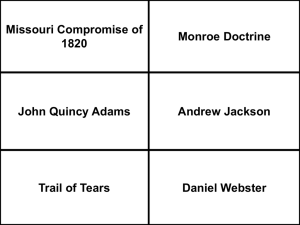The Treaty of Waitangi/ Te Tiriti o Waitangi
advertisement
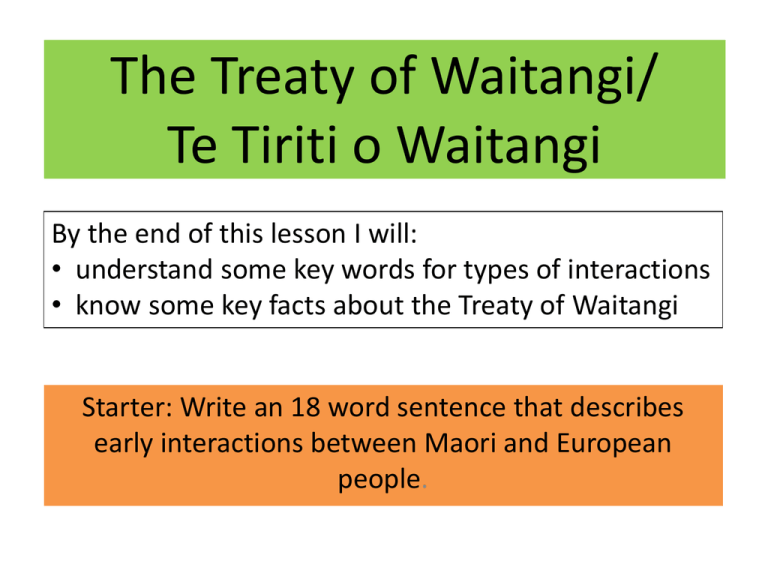
The Treaty of Waitangi/ Te Tiriti o Waitangi By the end of this lesson I will: • understand some key words for types of interactions • know some key facts about the Treaty of Waitangi Starter: Write an 18 word sentence that describes early interactions between Maori and European people. Types of Interaction Word Rejection Separation Adoption Integration Assimilation Definition Image/ picture Rejection e.g Abel Tasman and Murderers Bay Separation Accept the European arrivals but try to remain unchanged. Kingitangi movement was a way to try and live a separate life from the British. Adoption Taking on some aspects of European life such as using tools or wearing European clothing Integration • Maori integrating aspects of ‘European’ culture • Europeans adopting aspects of ‘Maori’ culture Assimilation Maori felt for some time that Pakeha culture would swallow up their culture entirely. E.g Speaking Maori in schools was banned. QUESTIONS about Interaction 1. Why was rejection not really possible as a choice for Maori? 2. Why would separation have been difficult? 3. Which of these is closest to what you think New Zealand is like today? Explain your answer. 4. Extension: Which of these is closest to what NZ was like 100/ 150 years ago? Explain. Questions about the Treaty…? • Each person is to write 1 question that they have about the Treaty of Waitangi. • Write it onto a small square of paper and I will collect it. • We will attempt to answer these over the next few days. Treaty Quiz 1. What date was the Treaty of Waitangi first signed? 2. Where was the TOW first signed? 3. Which 2 groups of people was the TOW signed between? 4. Which language was the TOW written in? 5. Where would you have to visit to see the TOW today? Treaty Quiz 1. TOW was first signed on the 6th February 1840 2. The TOW was first signed at Waitangi, in the Bay of Islands. 3. The TOW was signed between the British Crown and a collection of Maori Chiefs. 4. The TOW was in both English and Maori 5. The surviving TOW documents are currently in NZ Archives in Wellington. A Treaty is: • A treaty is a legal document that expresses an agreement in words. • It is usually signed between sovereign states (countries) and/or international organizations. Before the Treaty of Waitangi… • In 1835, 35 chiefs from the northern tribes in NZ signed the ‘Declaration of Independence’. • Why did the Northern Chiefs sign it? To Declare: – …their mana and rangatiratanga over tribal lands – …their independence of their lands and NZ under the authority of the United Tribes of New Zealand – United Tribes would be responsible for the government and laws in their lands – Encourage southern tribes to join – To thank the King od England for his support and to ask for his continued support. When, Why, What, Where, Who and How? • In pairs, read pages 22 and 23 of the text book ‘Our Treaty’. • Answer each of the questions above with 1 or 2 word sentences – For why, write down at least 6 reasons. – For who, the person mentioned is just 1 person involved. You can add others later. Why did we need a treaty? • The British wanted to claim NZ as a British Colony – people from other countries were starting to look like they would try to claim it. • Some British settlers living in NZ were breaking laws but couldn’t be charged. • More and more settlers started to come to NZ • The ‘Declaration of Independence’ stated that Britain needed a treaty to make it a colony.
